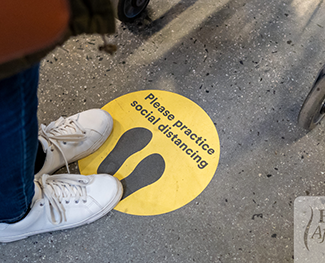In this blog series, Managing Your Private Practice, we explore how to successfully run your private practice as a mental health professional. We started the series by looking at how to market your private practice and how to create your office’s written policies. This month, we turn our attention to another critical aspect of owning your own business: billing and finances.
As a business owner, you get to decide how to structure your therapy practice, including which hours you’re available, who your clients are, what your office policies are, and which insurance providers to work with—if any. While the autonomy can feel liberating, the sheer workload of managing both the therapy part of your practice and the business part of your practice can be daunting. Fortunately, Health Affiliates Maine can help clinicians in this area, by providing administrative support for credentialing and billing for MaineCare, Medicare, and private insurance companies, among other benefits.
Separate Your Business and Personal Finances
Whether you have structured your private practice as a sole proprietorship or as an LLC will determine your accounting and bookkeeping methods to some extent. In either case, treat your practice’s finances as separate from your personal finances. This delineation—separate checking accounts, separate debit or credit cards, separate accounting systems—will not only save you a headache come tax-filing season, but it will also make it easier for you to check in regularly and see quickly whether your business is achieving its financial goals.
Take Advantage of Accounting Software
While some business owners still do their books by hand or on a simple Excel spreadsheet, some in private practice prefer bookkeeping software such as QuickBooks or FreshBooks. Among many helpful features of tools like these is the ability to easily generate balance sheets and profit and loss statements, which gives you an “anytime” snapshot of your practice’s finances. This ongoing financial monitoring can help with decision-making, for example, whether you need to adjust your marketing in mid-stream in order to build the business you want to lead.
Establish Timely Billing and Documentation Habits
Billing your clients on a consistent, timely basis can help you avoid any cash-flow issues and helps to reinforce your practice’s financial safety net. Not only does maintaining a regular billing cycle help make your income stream more predictable, but consistency also communicates stability and reliability to your clients. Since billing at HAM is tied to session documentation, timely completion of notes is vital to receiving regular payments. In addition, collection of copays, deductibles, and coinsurance at the time of service is ideal to ensure receipt of payment, particularly if the client does not return for services thereafter.
Outsource Administrative Tasks
When it comes to administrative tasks, it can be tempting to try wearing “every hat” for cost-saving purposes. But outsourcing can actually be cost-effective by freeing up more therapeutic hours for client work. Thus, you might consider hiring an office assistant, an accountant, or an IT person to assist with HIPAA compliance for your practice’s computer systems.
Invest in Education
As a small business owner, you know there are many facets that go into how your business functions. Understandably, not all therapists are knowledgeable in accounting, IT, HR, or general business management. If this describes you, rest assured, you are in esteemed company, and you might consider making educational investments in areas where you are less skilled or knowledgeable. The good news is that brushing up on your business management skills—whether by attending financial training workshops or seminars, reading books and articles, joining networking groups, and so forth—is generally a tax-deductible expense.
Protect Your Future Self
To guard against any potential financial loss down the road, it’s important to be prepared for any eventuality or absence. For your business, this means ensuring that you have short- and long-term disability insurance, pre-planned savings for upcoming vacations, bereavement leave, or illness, and a healthy retirement account. It’s not uncommon for business owners to delay paying themselves at certain phases of their operations, but compounding interest generally makes Individual Retirement Accounts (IRAs) and the like more financially lucrative the earlier you begin. So, be sure to pay your future self! While spending more money, especially at the onset of opening your own private practice, may sound counterintuitive, it can be a beneficial long-term investment for your future.
Sign Up To Receive Our Latest Blog Posts!
Learn more tips on living well and understanding mental illness. Help to end the stigma, and hear inspiring stories of recovery. Sign up here!










